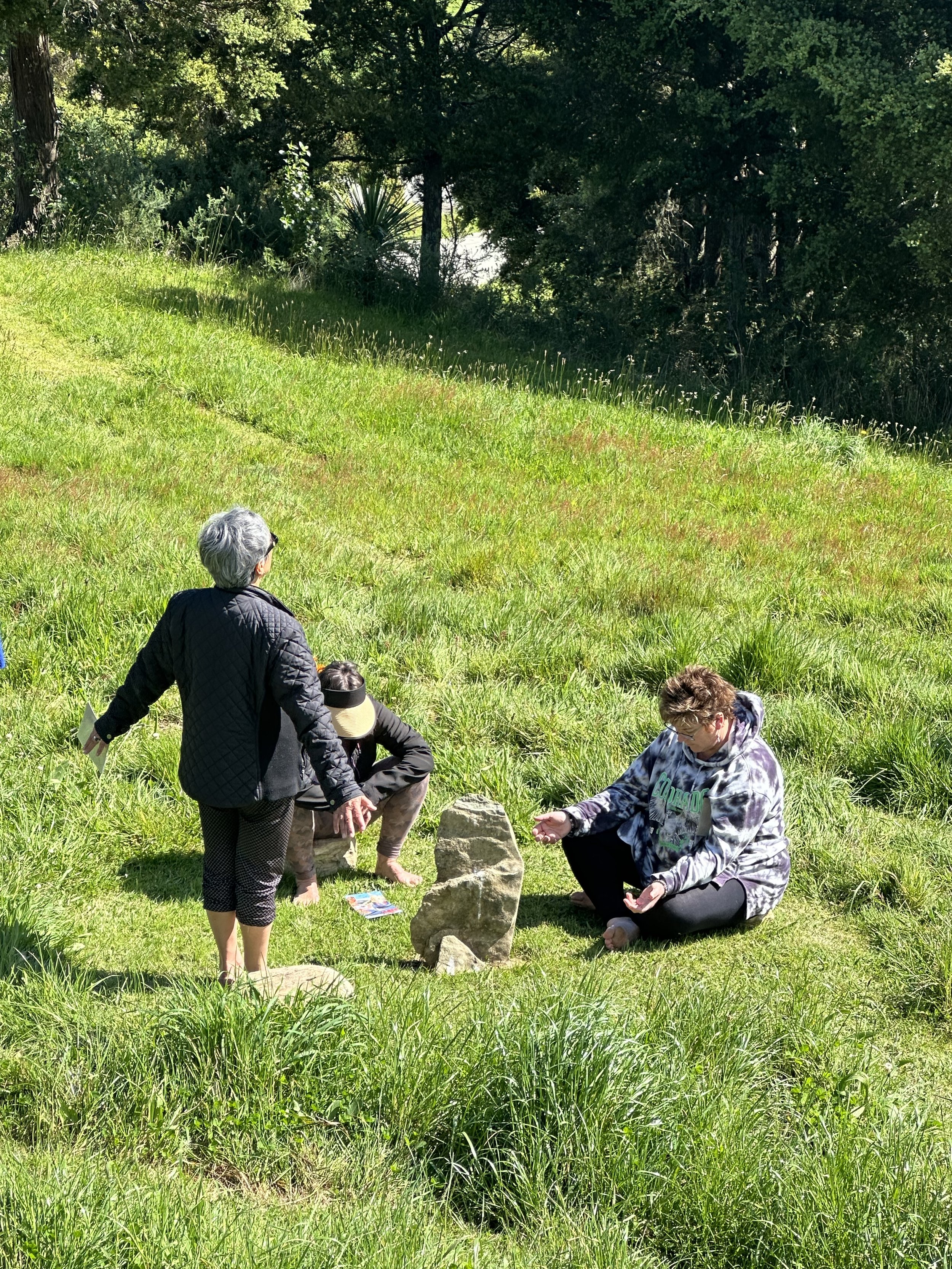








What is a Labyrinth?
A labyrinth is a sacred path used for walking meditation, prayer, and personal reflection, where the journey becomes a space for connecting Mind, body and Spirit. Unlike a maze with dead ends and confusing turns, a labyrinth has one clear path leading to the center and back out, offering a safe and guided way to explore one’s inner world.
Benefits of Walking a Labyrinth
Walking a labyrinth can help quiet the mind, open the heart, and ground the body. Many people find answers to long-held questions, experience healing, and tap into creativity or a sense of wholeness. Each journey is unique—what will you discover in your walk?
Guidelines for Walking the Labyrinth
The labyrinth’s single winding path to the center allows you to focus inward without worry of getting lost. There’s no single “right” way to walk a labyrinth; it’s all about honoring your needs and the presence of others. One way of walking the Labyrinth, can involves three stages:
Releasing: On the path inward, let go of thoughts or limiting beliefs.
Receiving: At the center, pause to listen and be open to insights.
Returning: Follow the path back out, carrying with you whatever you’ve received.
You may choose to sit quietly at the center or simply move at your own pace, whatever feels right to you. Many begin their walk with a moment of quiet reflection, often bringing questions, intentions, or simply a desire for calm.
A Spiritual Journey Across Cultures
The labyrinth is an ancient symbol, found in many cultures for over 5,000 years. In Native American traditions, it aligns with the Medicine Wheel and the "Man in the Maze" symbol. The Celts called it the "Never Ending Circle," while mystical Judaism recognizes it as the Kabala.
Labyrinths Today
Today, labyrinths are found worldwide in hospitals, parks, churches, schools, and even private backyards. They are open to all, serving as a universal tool for meditation, stress relief, spiritual growth, and community connection. Walking a labyrinth integrates body, mind, and spirit, fostering balance, insight, and peace.
The Labyrinth of Chartes Cathedral, France?
The Chartres labyrinth, constructed between 1215 and 1235, stands as one of the most iconic and influential examples of High and Classic Gothic architecture.
Why is Chartres Cathedral so special?
Chartres Cathedral is renowned for the remarkable unity of its architecture and decoration, embodying the innovations of early Gothic design. Its vast influence on Christian art and medieval architecture makes it a pivotal landmark in the history of the Middle Ages, representing the height of Gothic architectural achievement
Te Moata Labyrinth, Coromandel Penninsula
The Te Moata labyrinth is based on the sacred geometry of the labyrinth at Chartres Cathedral in France. It is the exact length and width of the circular pathway, has the six petalled centre and 114 lunations around the outer edge.
All the materials used are local, the clay pathways lined by river stones from a nearby beach and spiral stones at the entrance made individually at a local pottery. Hand beaten copper forms the overall shape of the labyrinth creating a distinctive contrast to the Te Moata red clay.




